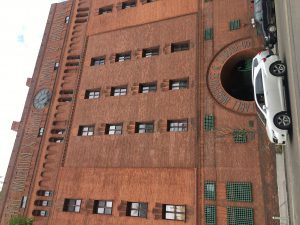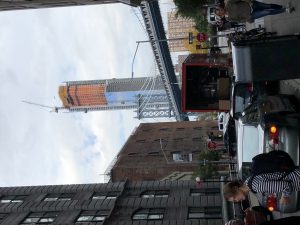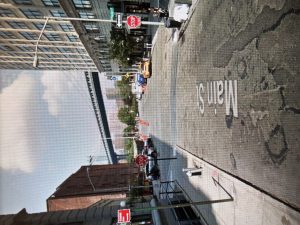Ever since it’s establishment, New York City has been a city known for it’s diversity. Nicknamed the “melting pot”, New York City is home to many niche communities of various immigrants who have formed their own “New Yorks.” These little communities that have overlapped have created what is unique to New York, positively improving our urban landscape. But while there are many positive overlaps in much of New York City, as described by Whitehead and McGrath, there are also a lot of negative overlaps created by gentrification, that are hurtful to New York City’s cultural landscape.
The location I chose is a tiny corner on the edge of Chinatown. It’s around a 25 minute walk from City tech, you cross the Manhattan bridge, and walk down Canal towards Essex street. Seeing that what was once a deli and Chinese breakfast cafe become a trendy coffee joint really shocked me. I remembered waking up Saturday mornings and taking the train from Queens to Chinatown for doctors appointments, and buying soda from the Deli and waiting for my father to get coffee. What used to be so insignificant suddenly means a lot to me. The whole feeling of the area completely changed as well. It used to be bustling in the morning, The East Broadway station used to be full of people coming in and out, but now few people pass through. It used to be a busy center of transport, but now it’s a relaxed open environment. I hadn’t been to Chinatown most of high school, It took me a while to realize that this new area with Cafes was the same area I used to get breakfast from before Saturday school and doctor’s appointments. There is also a very distinct border to Chinatown and the lower east side. And you can feel the Lower East Side slowly encroaching, pushing Chinatown out of New York City.
Overlaps like this are a big problem because residents from Chinatown are primarily elderly and lack communication skills. They’re immigrants who came to New York and formed a community to help each other survive in their rough new environment. But as the city aged, it seems like Chinatown never did, The shops remain the same, the people remain the same, but it’s slowly dying. Kids are moving out and starting new lives and leaving the elderly behind to fend for themselves. The elderly are no match for the trendy hipsters moving in across the street. Raising rent, language barrier, and the public viewing them as lesser has made it hard for the elderly to push back and prevent the Lower East Side from pushing them in.
So what can we do about it? Media is the biggest way to help Chinatown. Educating the population and gaining sympathy is the best way to gain traction in this fight. Workshops where we can inform others about the struggles of keeping Chinatown alive. Promoting communication and community effort will greatly help Chinatown and New York City as a whole.








